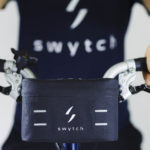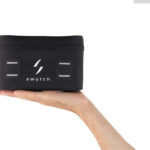Going back to controller and algorithm, which ties in with your response, this is how I would approach it:
To accommodate a wide range of operating conditions, flexibility is allowed. But I would impose a hard limit of 250W output power at 25km/h. More output power is allowed but only if speed is reduced in proportion, so that 500W is fine but only with a 12.5km/h ssistance speed cap, and 1000W is OK up to 6.25km/h.
That way heavy riders can get up hills, normal riders can get up steep hills, EAPC performance is in line with pedestrians' expectations i.e. they are not blasting up steep hills at unbicyclelike speed and scaring the children.
Simple to implement by treating the controller as part of the motor, and giving the controller knowledge of the motor's performance curves in the same way that an IC engine is constrained by the programming embedded in its ECU.
This approach also allows the use of any motor as needed to achieve the necessary performance, because any excess capability is constrained by the controller algorithm. For example, bikes aimed at 150kg riders can use a chunkier motor, or a slower motor wind to manage the extra load in a way that respects the intent of the regulations.
It isn't illegal for any bicycle to ascend hilly roads at 25kph. What enables me to do so, also enables me to drag heavy objects uphill on my bike trailer, removing my need for a (more) polluting car. I avoid cycling on pavements and trails. I joke about it, but I'm not actually power mad - I was quite content with my slow hill climbing speed, with my controller limited to 15A, capable of hauling up to what's a wise limit for my bike's weight +my bodyweight to haul.... until this fateful night when mad gremlin claws sprinting uphill came within feet of my bike. Footsteps sounded uncomfortably close.
... happpily, the ascending the same hill is faster now, but I'd need an entirely diffrent bike to outrun the car:
I only corner fast when going downhill, and only when in a hurry - I did the same with my acoustic bikes, so there's no change in my behaviour there.
Except uphill, the lycra lot blast about faster than I do. "Blasting" along at any speed beyond 8mph exceeds motorist expectations, and that's one reason why I installed an Oxford lollipop on my handlebar's right side - I got pissed off at cars misjudging my speed and attempting to overtake ahead of traffic islands or bends etc. and screeching to a near stop alongside me when confronted directly ahead with the obstacle or oncoming traffic (difficult to capture on camera, it's front facing lens isn't 240° wide, and the lollipop has stopped it happening). In my 25kmh hill climb video, there were cars behind my bike which normally would have overtaken exactly like that ahead of those islands, but the were forced to loiter by the repulsive power of my lollipop. Here's video of a driver fleeing using the wrong lane ahead of the traffic island - another one effectively repulsed by my lollipop! My speed was 25kph. This fool didn't want to or couldn't slow down and wait.
And it's so much faster to stop uphill because of the non-removable gravity assisted braking system installed by default on every bicycle by Loki, very early during the coalescing of this universe, after the gigantuan fat alien lady sneezed in an adjacent universe constrained by very tenuous physical laws of no particular intent.
This approach also allows the use of any motor as needed to achieve the necessary performance, because any excess capability is constrained by the controller algorithm. For example, bikes aimed at 150kg riders can use a chunkier motor, or a slower motor wind to manage the extra load in a way that respects the intent of the regulations.
There's that "Intent" divining rod/crystallball/chicken entrails/tea leaves stuff again. It's why judges don't use them anymore, they use gavels. Do you really think if such a bright bunch of people had intended different, they would have been capable of defining the law accordinly? Advocating for a number of different motors for different weights of rider and terrains is bonkers, will be bonkers expensive for manufacturers and consumers. Making ebikes more inclusive is good for the planet. Keep 'em cheap. My bike+conversion 36V Bafang BBS01B kit with 19.2Ah battery cost £809 in total. Your 40Nm £3,000-ish(?) torque-sensored Shimano sounds crap, I doubt it'd be capable of anything I need it to do, certainly not with me riding it. Yours is an expensive bike for fit people, which doesn't suit the majority of average UK buyers. What's more, it has proprietary comms, hard or impossible for the owner to to repair at home at low cost. I detest all such bikes, and I hate your abhorrent plan to increase variety of the bloody things - they're e-waste waiting to happen long before necessary. I smell yet another failed Kickstarter or Dragon's Den pitch. Duncan Duncan Bannatyne would sound like he's choking this a rat sandwich swearing in Scottish.
I mean, what's with the solar trailer, when you have such an ungreen bike? Is the solar trailer less of a showcase for solar panels, and more of a demonstation of how the technology can more cheaply enable your adventures?
I shall write a dot-matric letter, asking your inkjet printed letter with your bonkers ungreen recommendations be disregarded - they're used to hearing from me, about how all fences in the UK should have hedgehog sized holes cut into them, so they can pass between gardens to feed, rather than starving on perfectly manicured lawns or astroturf, after they've wandered in looking for food because the garden door was left open, only to be trapped and die slow agonising deaths.





